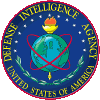

In August 1948, supposedly following general elections throughout the peninsula, the Democratic People's Republic of Korea was established, with Kim Il-song heading the central government. These factitious elections are the basis for Pyongyang's claim as the only legitimate government of Korea and make reunifying the country on its terms a legitimate national goal. In pressing this claim, North Korea has engaged in a political, economic, and military competition with the Republic of Korea. However, in any comparison except military power, Pyongyang is a poor second.
The Soviet Union sent military officers to form and train the new North Korean Army. Moscow decided to equip the force with modern armor and medium and heavy artillery. Despite Korean protests, the Air Force and Navy remained small. From the outset, the Soviet Union wanted to provide Pyongyang with a military force tailored to implement its goals but feared Pyongyang might involve it in a conflict with the United States. The Soviet Union and China continue to provide carefully tailored military aid, primarily because of concern that the North could involve the major powers in a war. Both the Soviets and the Chinese dispense aid to maintain some degree of influence with fiercely independent ruler Kim Il-song and encourage him to support their political positions. Kim appreciates the situation and uses it to his benefit.
Although it continues to try to isolate South Korea politically and overshadow it economically, Pyongyang believes the political, economic, and military assistance and cooperation between the Republic of Korea and the United States significantly impedes its goals. Even though it has sought selected military and economic aid from Soviet and Chinese neighbors, North Korea attempts to build the economy and military with its own resources to limit outside influence. By making military requirements first priority, North Korea has developed strong military forces with available resources for launching an offensive.
Supporting its goals and building on its Korean war experience, Pyongyang focuses national efforts on developing a strong, modern military force. The Korean People's Army is designed to protect socialism, defend North Korea, and maintain the option for militarily reunifying the peninsula if conditions favor a quick victory. The armed forces have evolved into a strong ground force supported by extensive special operations forces and limited naval and air forces. High-ranking military officers, many who fought with Kim against the Japanese and during the Korean conflict, hold key positions throughout the party and government. They oversee all military and supporting civilian programs. North Korea depends on the armed forces to implement national policy and gives them top priority for personnel, supplies, and resources. This military priority causes chronic disruptions and shortages in the civilian sector, severely degrading the standard of living. This sacrifice made North Korea largely self-sufficient for most military equipment, weapons, and supplies, but it must import some modern weapons and electronic equipment.
North Korea has dedicated most of its human and economic resources to the military. This allocation is expensive; it diverts resources from investing in the civilian economy, developing foreign trade, and assimilating modern technology.
North Korea is one of the most militarized countries in the world. Not only has it fortified the Demilitarized Zone with extensive underground facilities, but over 65 percent of its active ground forces are deployed between Pyongyang and the Demilitarized Zone. Naval patrols and artillery protect coastal areas. North Korea claims a coastal defense zone and sometimes enforces this claim by capturing Japanese and South Korean fishing vessels. Military and military production facilities are well-protected, camouflaged, or underground. Aircraft, air defense artillery, and surface-to-air missiles provide overlapping, indepth air defense for forces and facilities.
Using Chemical Weapons
North Korean chemical weapons would complement conventional military power and provide some unique advantages. In a surprise attack, chemical weapons have a demoralizing effect on defenders. They reduce the effectiveness of defending forces, denying use of mobilization centers, storage areas, and military bases without physically destroying facilities or equipment. Used against civilian and rear area targets, chemical weapons would cause extensive casualties, tax medical resources, impede mobilization, and cause general panic.
In wartime, some of the nearly 60,000 military personnel assigned to the 22 Special Operations Forces brigades and light infantry battalions would be available to open a second front in South Korea's rear area.
During offensive operations, corps reconnaissance units would conduct penetration missions to collect military intelligence and launch raids on military and civilian targets.
Some units would infiltrate behind allied lines by air and sea, while others would cross into South Korea before the main attack through tunnels under the Demilitarized Zone. These units would penetrate at night to locate and destroy command posts, destroy lines of communication, create confusion in rear areas, interdict troop and supply convoys, attack military installations, and gain control of critical terrain.
